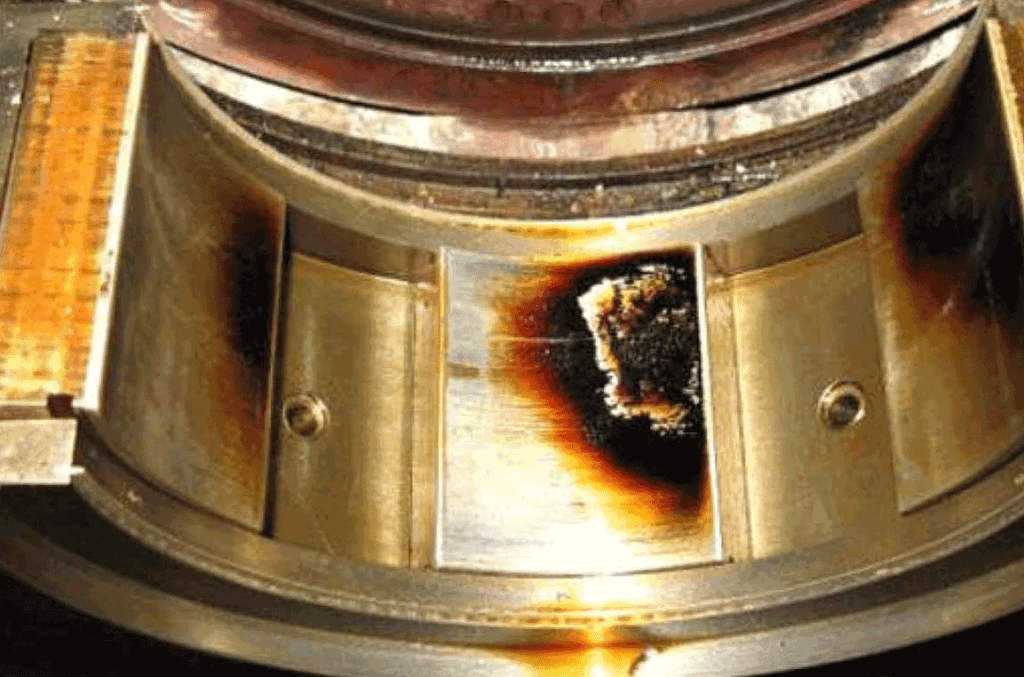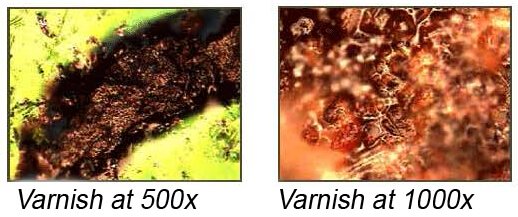
Varnish Potential Analysis
Varnish is an insoluble film that coats the internal components of machinery and can devastate production. Varnish deposits are sub-micron in nature and cannot accurately be measured using standard oil analysis tests.
In 2006, Eurofins TestOil developed a solution to measure and report varnish potential for our customers. Today, our Varnish Potential Analysis is the industry-leading solution for varnish risk applications.
What is Lube Oil Varnish?
Varnish is an insoluble film composed primarily of organic residue that coats the internal components of machines lubrication systems. Often comprised of degradation products associated with oxidation or thermal degradation, these soft contaminants are less than 1 micrometer in size.
Causes of Lube Oil Varnish
Oxidation: a chemical reaction of an oil molecule with oxygen to produce carboxylic acids.
Thermal degradation: a chemical change in the base oil molecules under high temperatures. Specific mechanisms of thermal degradation – Micro-dieseling, Electrostatic Spark Discharge, and Hot Spots.

Benefits of Varnish Potential Analysis Testing:
- Alerts customers of developing lube oil varnish problems
- Measures oil’s propensity to drop out varnish deposits
- Promotes proactive maintenance and contamination control
- Provides turbine users confidence at startup
Damage Done By Lube Oil Varnish
- Reduced clearance zones affecting lubrication regimes. Often, this means a transition from hydrodynamic lubrication to boundary lubrication, which increases wear rates of pumps, bearings, and gears.
- Increased friction in components. This friction will result in higher energy requirements and can cause valves to stick or seize.
- Higher operating temperatures. Varnish acts as an insulator, lowering the effect of heat exchangers and lessening the ability of the lubricant to cool. The impact of friction and reduced clearance zones also contribute to higher temperatures.
- Restriction or impedance of oil flow. Varnish can cause valves, strainers, and filters to clog.
- Increased wear rates. Varnish captures hard contaminants creating an abrasive surface that will accelerate wear. Varnished surfaces often appear like sandpaper when examined under a microscope.
HOW TO OUTSMART VARNISH AND AVOID COSTLY DOWNTIME
The lubricating oil in gas turbines and hydraulic systems is increasingly subject to the ravages of varnish. The debilitating effects of varnish are well documented. The complexities associated with detecting varnish potential render routine oil analysis ineffective in reporting varnish. This ebook discusses Varnish Potential Analysis and why it is a necessary tool for any lube system prone to varnish. By monitoring the contaminants responsible for varnish, reliability managers and maintenance planners can implement appropriate corrective actions before costly damage occurs and unnecessary downtime is experienced.


